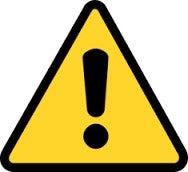As of today’s date, businesses have just one more year to comply with the newly-amended Clear and Reasonable Warnings regulations from California’s Proposition 65 (“Prop 65”), which take effect on August 30, 2018. Businesses should consider the Clear and Reasonable Warning compliance requirements and guidance outlined below now to be prepared for this deadline and minimize the risk of enforcement litigation that undoubtedly will ensue after the regulations become effective on August 30, 2018. In fact, businesses can start complying now if they choose.
Background on Prop 65
Prop 65, officially known as the Safe Drinking Water and Toxic Enforcement Act of 1986, was enacted as a ballot initiative in the State of California in November 1986. It is a unique California law originally enacted with the goal of protecting the State’s drinking water sources from being contaminated with chemicals known to cause cancer, birth defects or other reproductive harm. Prop 65 requires businesses in the chain of commerce to provide a “clear and reasonable warning” to inform Californians about exposures to certain chemicals in products that consumers purchase, use or are released into the environment. Prop 65 also requires the State to maintain and update a list of chemicals known to the State to cause cancer or reproductive toxicity. The list of chemicals must be updated at least once a year and has grown to include more than 900 chemicals to date. Given the vast number of chemicals included in the Prop 65 list and the fact that the requirements apply to businesses that manufacturer, distribute or sell any product that contains any of the chemicals, Prop 65 has a sweeping impact on companies throughout the US. Businesses who are not aware that their products contain any of the 900 chemicals or who fail to comply with Prop 65’s vague and somewhat confusing requirements are facing widespread litigation by the State of California, or, more commonly by private Attorney General plaintiffs who quickly and routinely file notices of violation and then lawsuits for any alleged non-compliance with Prop 65.
Prop 65 requires businesses in the chain of commerce to provide a “clear and reasonable warning” to inform Californians about exposures to certain chemicals in products that consumers purchase, use or are released into the environment. Prop 65 also requires the State to maintain and update a list of chemicals known to the State to cause cancer or reproductive toxicity. The list of chemicals must be updated at least once a year and has grown to include more than 900 chemicals to date. Given the vast number of chemicals included in the Prop 65 list and the fact that the requirements apply to businesses that manufacturer, distribute or sell any product that contains any of the chemicals, Prop 65 has a sweeping impact on companies throughout the US. Businesses who are not aware that their products contain any of the 900 chemicals or who fail to comply with Prop 65’s vague and somewhat confusing requirements are facing widespread litigation by the State of California, or, more commonly by private Attorney General plaintiffs who quickly and routinely file notices of violation and then lawsuits for any alleged non-compliance with Prop 65.
Amendments to the Clear and Reasonable Warnings Regulations
Prop 65 requirements are implemented by the California Office of Environmental Health Hazard Assessment (“OEHHA”). For 30 years, OEHHA’s regulations on what constitutes a “clear and reasonable warning” under Article 6 of Prop 65 remained largely unchanged. However, in November 2015, OEHHA introduced vast changes to the Clear and Reasonable Warnings regulations in Article 6. Following public notice and comment (and many objections from the regulated community), these amendments were adopted on August 30, 2016. The amended Prop 65 Clear and Reasonable Warnings regulations will become operative on August 30, 2018.
Substantively, this regulatory action repeals all provisions of the Article 6 regulations, except certain provisions added via an emergency rulemaking in April 2016 related to warnings for exposures to bisphenol A in canned foods and beverages. The amended Clear and Reasonable Warnings regulations in Article 6 provide, among other things, new requirements for the specific content language of warnings and how those warnings are transmitted to consumers, including on product labeling, warnings on signs and shelf tags (where the warning is not affixed to each product), and new requirements where products are made available via the Internet. Another notable change concerns notification requirements from manufacturers who ship products in bulk to retailers.
Warning Labels. OEHHA has adopted generic warning language (commonly referred to as “safe harbor” warnings) that, if used, would constitute the “clear and reasonable warnings” necessary to comply with Prop 65. For the content of warnings, the amended Prop 65 Clear and Reasonable Warnings regulations require that the safe harbor warning include the word “WARNING” in all capital letters and bold print, and include a symbol consisting of a black exclamation point in a yellow equilateral triangle with a bold black outline preceding the warning. Also, the amended regulations include different safe harbor warnings for products that contain only carcinogens, only reproductive toxicants, both listed carcinogens and listed reproductive toxicants, or a listed chemical that is both a carcinogen and reproductive toxicant. Each of these warning requirements are outlined in the regulations.
WARNING: This product can expose you to chemicals including [name one or more listed chemicals] which [is/are] known to the State of California to cause cancer and [name one or more listed chemicals] which [is/are] known to the State of California to cause birth defects or other reproductive harm. For more information go to http://www.p65warnings.ca.gov/.
The example above shows what the warning should generally look like.
Notice to Retailers. Moreover, there are certain new requirements for manufacturers who ship products in bulk to retailers. The manufacturer must provide specific written notice directly to the authorized agent for a retail seller, must obtain the retail seller’s confirmation electronically or in writing of receipt of the notice, and must issue a renewal notice (and obtain the retailer’s confirmation of receipt of the renewal notice) within 6 months during first year of effective date of regulations (i.e., before February 28, 2019).
Effective Date for Amended Regulations, Grace Period for Compliance Now, and Enforcement
Businesses are not required to re-label products that are already in the stream of commerce in order to comply with the new safe harbor warnings. OEHHA has ensured that “the regulations allow the old safe harbor warnings to remain and be considered compliant if the product was manufactured prior to the effective date of the new regulations.” However, as mentioned, the amended Prop 65 Clear and Reasonable Warnings regulations will become operative on August 30, 2018. And despite the safe harbor allowance for products manufactured prior to the effective date of the regulations, many businesses have opted to start complying with the amended regulations.
From August 30, 2016 until August 30, 2018, businesses may comply with the prior regulations currently in effect, or they may comply with the newly amended regulations. OEHHA has advised that this two-year grace period “will allow for a reasonable transition period for businesses to begin providing warnings under the new provisions.” In fact, many businesses have already started to prepare and shift their operations to comply with the amended Prop 65. These time-consuming preparations include designing product packaging and shelf tags with the new safe harbor warnings on them; notifying retailers of the warnings and requirement to display such warnings as provided by the manufacturer, or re-testing products to confirm whether they contain one of the 900 listed chemicals regulated under Prop 65.
There has been an excessive amount of litigation filed, particularly by private plaintiffs alleging that businesses are not complying with the requirements of Prop 65. The statute includes financial penalties and recovery of attorneys fees’ costs which has led to an increasing number of plaintiffs lawyers in California focused solely on pursuing Prop 65 enforcement litigation. The cases begin with a 60-day notice of violation/warning letter and, if the matter is not resolved and settled (which includes the payment of plaintiffs lawyers’ fees), then formal litigation is commenced. The California Attorney General’s office maintains a website with the 60-day notice letters, summary of settlements and information regarding litigation cases filed under Prop 65. Within the past year, the vast majority of private enforcement has targeted products containing lead, lead compounds, and phthalates. We expect an even more substantial increase in the number of private enforcement cases after the new warning regulations take effect on August 30, 2018. With only one year left to comply and with private attorney generals ready to pursue enforcement and recover their attorney fees, it is imperative that businesses understand the risks and complexities associated with the requirements in amended Prop 65 Clear and Reasonable Warnings regulations and comply before August 30, 2018.





 />i
/>i

